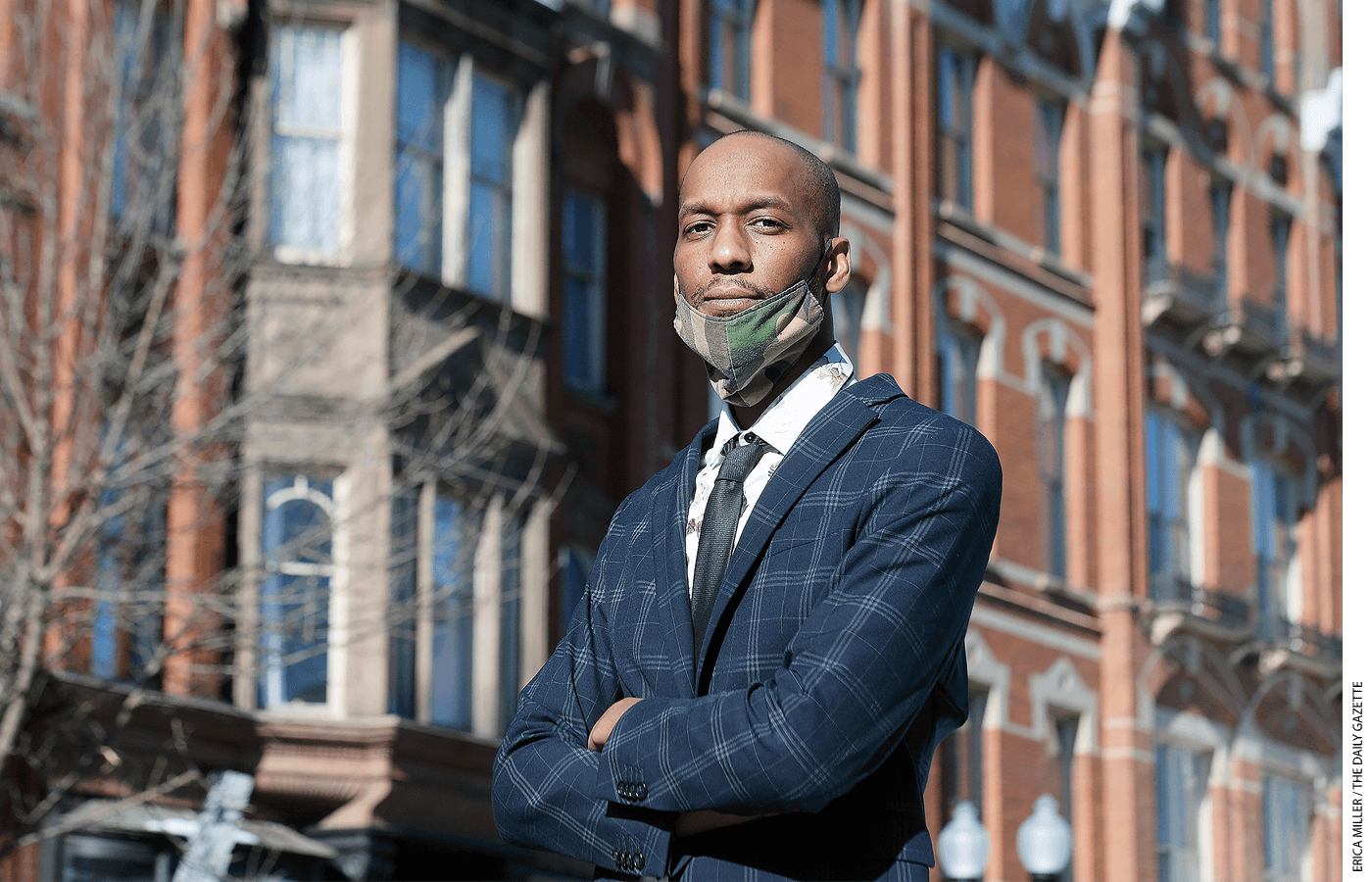
Few people in education policy get to see visible evidence of their work in real time and three dimensions. Not once, but whenever she wants it, Susie Miller Carello can stand on a subway platform in Harlem, and, for a few minutes on any given school day, watch the world she helped midwife pass before her eyes. “If you go to the subway station at 125th Street and Lenox from 7:15 to 7:30 in the morning, it’s filled with kiddos with school uniforms and backpacks,” she says. The kids in navy blue and white are en route to Harlem Village Academies. The bright orange polo shirts and ties or plaid jumpers belong to children who attend one of the four Success Academy schools in the neighborhood. Scholars in yellow and blue are on their way to Democracy Prep a few blocks up the street.
For a dozen years Carello served as executive director of the State University of New York’s Charter Schools Institute, the lead authorizer for well over half of the state’s 357 charter schools. The explosive growth of New York City’s charter sector happened first on her watch, and then under her nose. “The first time it happened, I had just hopped on the train in Times Square and noticed the moms and dads and the kids in the subway car,” she recalls. “And when I got off the train, I was like, ‘Oh my God, look at this! These are all our kids.’ And they’re going to these schools that are providing them much better options than they would’ve had 20 years ago.”
At a different moment, both politically and in education reform, Carello might have lots of company taking in the view from that subway platform. For some politicians, philanthropists, and other members of New York’s elite, the city’s charter sector has been an object of civic pride. That’s so particularly in neighborhoods like Harlem, the South Bronx, and downtown Brooklyn, where educational failure stretches back decades. Those neighborhoods have large concentrations of charter schools, including dozens run by the largest and most well-established charter management organizations in the country: KIPP, Success Academy, Uncommon Schools, and Achievement First, among others. A visitor might look at the passing parade of school uniforms and smile at the sight of disadvantaged children put on the “path to possible,” as one charter advocacy group’s slogan puts it, by energetic reform efforts backed by philanthropy and effective public policy. Over the last 20 years, New York City charters have launched tens of thousands of low-income Black and brown children to college and beyond.
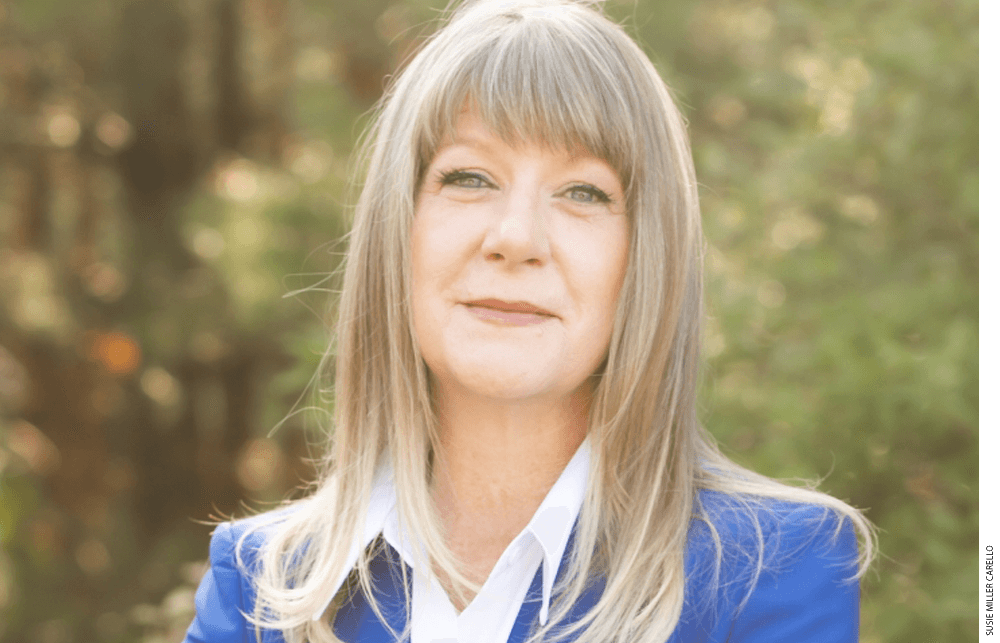
In recent years, though, those cheering on the charter sector have seen their numbers dwindle. With few exceptions, the bipartisanship that ushered in the heyday of the education-reform movement has badly eroded. That means diminished political support for charter schools and minimal appetite to thwart the will of the powerful teachers union in deep-blue New York City. In March 2019, the city reached a state-imposed cap on the number of charter schools permitted to operate. Less closely examined or well understood is the resistance that has risen from within the education-reform movement itself. Charter schools, particularly those run by networks with resources sufficient to staff energetic recruitment efforts, have long relied disproportionately on young, recent college graduates to staff their classrooms. But the energy, idealism, and agenda of those recruits has changed. To the founding generation of New York’s highest-performing charter schools, strict classroom management, academic rigor, and high expectations were the hallmarks of well-run schools and conditions necessary for student achievement. But that same school culture can register as abusive and harmful, even grounded in white supremacy, to younger staffers steeped in the argot of social justice and committed to “anti-racism.” This clash of ideals happens largely over the heads of parents, who continue to swell charter-school waitlists and whose vision of a good school never seems to change much: safety, solid academics, character education, and a fair shot at college and upward mobility, whether their children attend a school that’s part of a large network or a single-site “mom and pop” charter school.
New York is emblematic of charter schools nationwide and indicative of the growing pains in the sector, buffeted by changing ideals and priorities, including from within the sector itself.
* * *
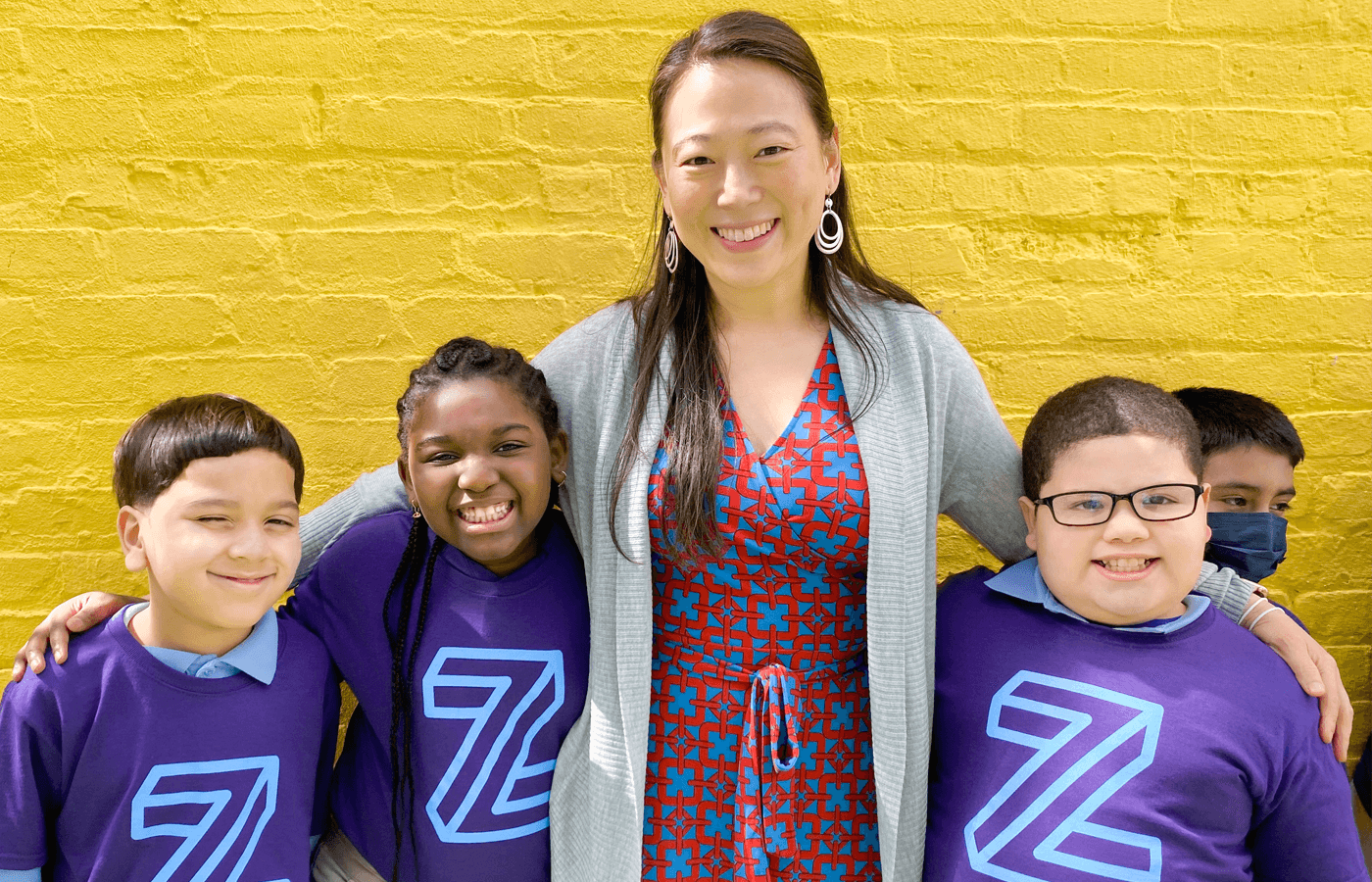
After disgorging students onto the platform in Harlem, the 2 train rumbles north to 241st street in the Bronx, where other high-performing charter networks like Icahn Charter Schools and Bronx Classical opened schools in neighborhoods long beset by educational failure. But to catch a glimpse of an up-to-the-minute symbol of the state’s charter sector, you need to leave the City entirely and travel 150 miles up the Hudson River to New York’s capital region. There you will find Re’Shawn Rogers, one of the state’s newest charter-school pioneers.
There is still “cap space” to create new charter schools in New York state outside of the five boroughs of New York City. Thus, in September of 2021, Carello and her staff recommended to the SUNY board of trustees that they approve Rogers’ application to launch Destine Preparatory Charter School the following fall with 116 students in kindergarten and 1st grade and to enroll 435 children up to and including 5th grade over the next five years. The school’s name is meant to invoke “Destiny,” but there’s a Destiny Prep in Jacksonville, Florida. Rogers didn’t want to risk copyright infringement or bad press, so “destiny” became “destine.” The shortened name is meant to invoke the great things the school’s students are destined to achieve.
On a Saturday morning in May 2022, Rogers is expecting about half a dozen families for an information session in a nondescript office building in between Union College and a riverside casino in Schenectady. The place once grandly called itself “the city that lights and hauls the world,” a reference to General Electric, which was headquartered here, and the American Locomotive Company, which went out of business in 1969. The city has been losing population for nearly 100 years. A demographic mix of 65,000 people call Schenectady home today, nearly one third fewer than at the city’s 1930 peak. The poverty rate is 20 percent, roughly double the national average.
The first person to arrive for the information session is Osei, a bright, energetic, and chatty five-year-old boy, who bounds into the third-floor conference room several strides ahead of his father and announces boisterously, “I’m here to meet my new school!” Almost immediately his attention is captured by a pile of donuts on the conference table. Without breaking stride, he marches around the table and grabs one, which his dad orders him to put down. When Rogers asks the child to say his name again, perhaps to redirect his attention from the treats, the little boy reaches for a pen and paper and insists on writing it out, first and last name. He pushes the paper across the table to Rogers. “Now I get a donut,” Osei says, making an announcement, not asking permission. His father, Harry Rolle, smiles and relents. “You worked up an appetite writing.”
“Good job, buddy,” Rogers smiles warmly at the child. “Hard work gets rewards. I’m in the same bucket as you.”
Rogers has been working hard on the launch of Destine Prep for two years; his reward is only now coming into focus as the school moves from two years of planning and authorization to meetings with prospective students and their parents. Charter-school applications are mind-numbingly detailed, running hundreds of pages. Would-be school founders must document a demonstrated need for a new school, describe their academic model in detail, and show community support in the form of a strong local board of directors. Then there is the nuts-and-bolts work of real estate, contracts, construction management, hiring staff, fundraising, and persuading families to take a chance on a school that exists only as a PowerPoint presentation.
“I helped scale up Success Academy, but we had extraordinary resources, seemingly unlimited support, and [Success founder] Eva Moskowitz busting through barriers,” remarks Emily Kim, who founded the Zeta Charter School network after several years as general counsel at Success. “I know exactly what needs to be done because I’ve done it so many times. When I think about independent charter schools, given all the challenges school founders face, I don’t know how they overcome these massive obstacles solo.”
When no other families arrive for the information session, Rogers gamely launches into his presentation with Destine’s operations manager, Mashoma Brydie, who joins the meeting via Zoom. Much of Rogers’s talk could have come straight from a pitch for a no-excuses charter school two decades ago: Destine will offer an extended school day and year; kids are expected to be in school every day; and learning doesn’t stop over the summer. Rogers believes in “logical consequences” for behavior management and stresses he’s “big on communicating” with parents. Osei starts running laps around the table and trying to get his father’s attention as Rogers finishes his presentation. The mission of Destine Prep is to develop students in grades K–5 to become FUTURE CHANGE MAKERS (the PowerPoint slide renders this in all caps) through “rigorous academics, social and emotional learning, and affirmation of their identities.”
* * *
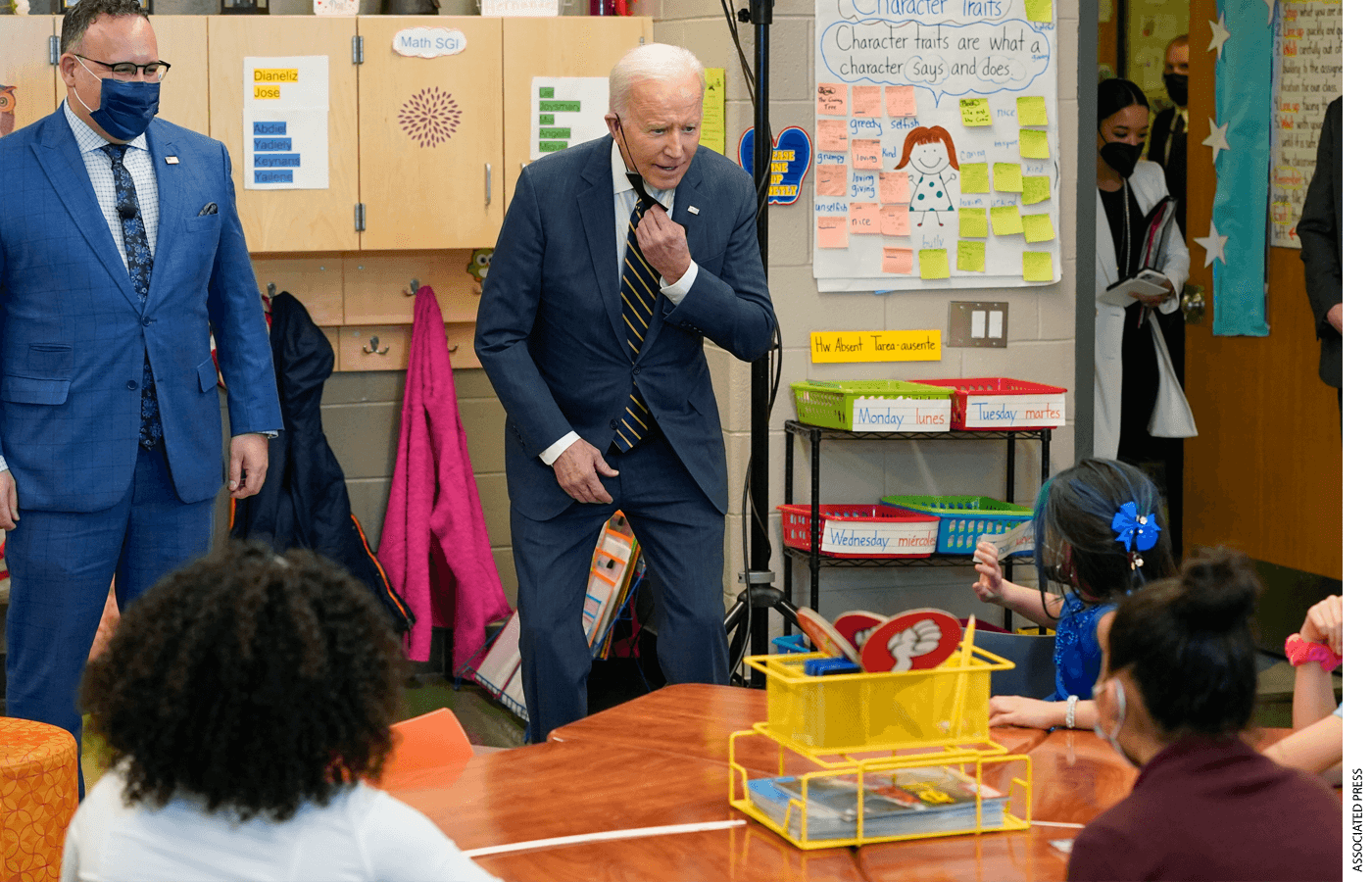
There was a time, fast receding into memory, when big-city charter schools were media darlings, lionized in movies like Waiting For Superman, and the subject of fawning coverage on 60 Minutes. They were the flagships of a fast-growing education-reform movement, luring the best and brightest new graduates of elite universities away from law schools and investment banks and into Teach For America, and from there to inner-city classrooms aspirationally named Harvard, Princeton, Georgetown, or Michigan instead of Room 222. Tightly run charter schools were celebrated as a rebuke to district-run dropout factories, which had relegated generations of low-income students to second-class citizenship. Charters bristled with do-gooder energy and dubbed themselves “no-excuses” schools, in the belief that the Black-white achievement gap was evidence of low expectations and indifference, not poverty and certainly not race. When students failed, it proved merely that adults had failed them. And there must be no excuses for adult failures. Period.
At the federal level, charter schools had patrons and champions from across the political spectrum. Bill Clinton was an early charter-school supporter; so was George W. Bush. The number of U.S. students in charters more than doubled from 2009 to 2018, to 3.3 million from 1.6 million, with most of those gains coming during the eight years of the Obama presidency. In the years since, bipartisan support for charter schools has significantly weakened. Earlier this year, President Biden’s Department of Education proposed new regulations on the $440 million federal Charter School Program. Progressives cheered the move to rein in money “squandered on unneeded, mismanaged schools and the operators.” Conservatives complained the move was “designed to bring the boisterous, popular charter school sector to heel.”
No single event heralded the change in the weather. In 2011, the biggest and most well-established urban charter network, KIPP, released a study showing that one third of its earliest cohorts of students had graduated from college—four times the rate for low-income Black and brown children at large, but less than half of the figure its founders believed they could achieve. The report led to significant changes in KIPP’s program and pedagogy. As the decade wore on, a palpable reform fatigue set in as some Americans soured on the standards, testing, and accountability regime that had come to dominate public education at large. Antagonists like Diane Ravitch hammered relentlessly at charter schools, questioning their results, attacking their “harsh disciplinary policies,” and turning “no excuses” from a rallying cry to an epithet. When widespread protests over racial discrimination inspired by the Black Lives Matter movement broke out on college campuses in 2015, charter critics adopted the protesters’ language. Teaching “taxonomy moves” common to no-excuses teachers represented “carceral pedagogy” aimed at “controlling Black bodies.” Students marching through school hallways in tightly supervised straight lines was “practice for prison.” White-led charter schools were said to echo power structures in society at large.
The charter sector has largely accepted the criticism as sincere and tried to adjust to it rather than rejecting it outright. That’s somewhat puzzling, given that there was ample material with which to construct a defense. First, college-preparatory no-excuses schools had lost little of their luster among parents for whom high expectations, tight classroom management, and school uniforms were reassuring signs of safe, well-run schools and an antidote to chaotic inner-city classrooms. Internal measures of parent satisfaction and “net promoter” scores (e.g. “How likely are you to recommend your child’s school to a friend or family member?”) remained consistently strong. Even more pertinently, the schools delivered measurable results. A 2017 study by Stanford University’s Center for Research on Education Outcomes examined charter schools across 24 states, New York City, and Washington, D.C., and found that attending an urban charter school run by a larger network of schools was associated with improved educational outcomes.
That was precisely the point of nearly two decades of education policy. As the authors of the Stanford report observed, “we would expect that only charter organizations with a demonstrated track record of success would be allowed to open multiple schools.” The report concluded, “it is reasonable to expect current policies to result in continued improvement. However, there is still room for charter school authorizers to accelerate the rate of improvement by ensuring only the finest of charter school organizations are given the privilege of expanding their services to multiple schools.”
Written only five years ago, that language already feels anachronistic. New York has gone in a different direction, functionally denying high-performing charter management organizations the privilege of expanding their services to meet the demand. The sector itself now responds to different sets of impulses and metrics than in its days of heady and explosive growth.
* * *
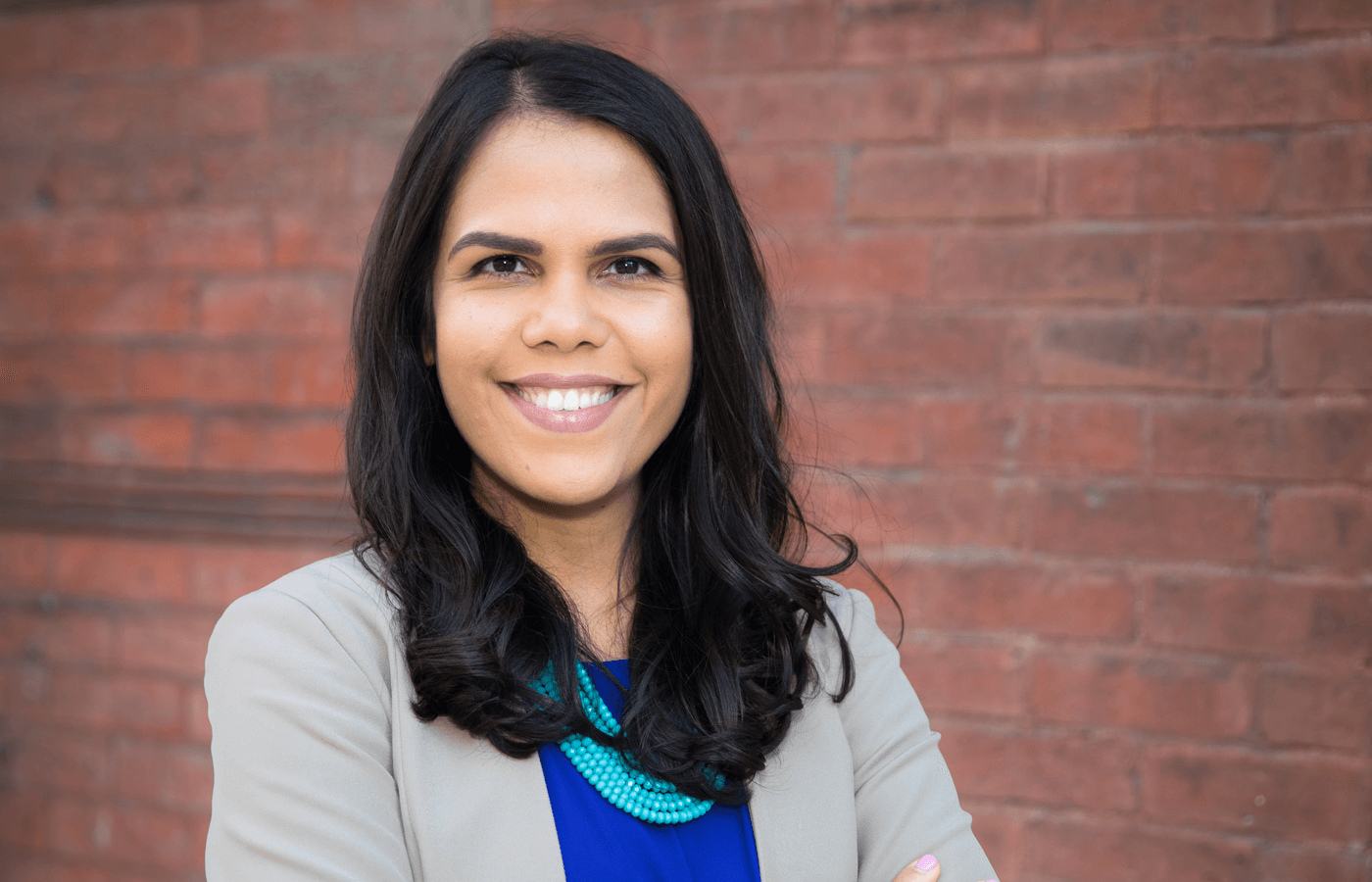
When charter schooling’s old guard talked about the importance of their schools and movement being “led by people who look like the people we serve” and mused about the day their students would come back to teach in the schools they once attended, they were imagining Re’Shawn Rogers. He was a charter-school student in his native Detroit and worked as a teacher for several years after graduating from Eastern Michigan University in 2012, rising to be humanities dean at Achievement First’s Aspire Elementary school in Brooklyn’s East New York neighborhood.
As a child he struggled in school. “I didn’t really learn how to read until middle school,” Rogers says. During those years, his family moved from Detroit to Lansing, Michigan, where Rogers attended a diverse public school and got involved with its theatre and band programs. For high school, he moved back to Detroit and attended one of the city’s first charters, operated by Detroit Community Schools. “My teachers were just great and met us wherever we were,” he recalls. “For the first time I started to feel successful. I got into AP classes and stuff that I never would have imagined in elementary school.”
His dream was to open a charter school back home in the Detroit area, but in the summer of 2020, he was accepted as a fellow at BES, a Boston-based leadership-development program (the initials originally stood for “Building Excellent Schools”) that identifies and supports emerging school leaders. It was BES that encouraged him to consider applying for a charter in upstate New York, which was terra incognita to Rogers. “I created this huge spreadsheet of anyone who was doing anything important in the Capital region and started calling them,” he says. “‘Did you go to school here? What was your experience like? What do you think about a new school?’” His initial impulse was to apply to SUNY to open a school in Albany, but neighboring Schenectady hadn’t had a charter school in 15 years, since International Charter School was closed due to poor academic performance and financial stress.
As a BES fellow, and with both financial and technical support and advice from the organization, Rogers began working on the application for what would become Destine Prep at a tumultuous time in the charter-school movement and the nation. The Covid-19 pandemic had closed schools for the last several months of the school year and put much of the country on lockdown; the May 2020 death of George Floyd at the hands of Minneapolis police ignited profound anger among many. The summer when Rogers began his BES fellowship brought to a boil tensions that had long simmered in charter-school networks and the broader education-reform movement.
Seemingly overnight, social media accounts such as Uncommon Truth, Survivors of Success Academy, BnB@DP (Black and Brown at Democracy Prep) and dozens of others began springing up with students and staff posting accounts of perceived racist slights and abusive practices in their schools. KIPP, a national network of more than 240 schools serving more than 100,000 students, announced it would retire its famous “Work Hard. Be Nice.” slogan. CEO Richard Barth explained that the trademark phrase “ignores the significant effort required to dismantle systemic racism, places value on being compliant and submissive, [and] supports the illusion of meritocracy.”
“As a white man, I did not do enough as we built KIPP to fully understand how systemic and interpersonal racism, and specifically anti-Blackness, impacts you and your families—both inside of KIPP and beyond,” co-founder Dave Levin wrote in a plaintive letter to KIPP alumni. “It is clear that I, and others, came up short in fully acknowledging the ways in which the school and organizational culture we built and how some of our practices perpetuated white supremacy and anti-Blackness.”
KIPP was the most visible example of the culture clash between veteran figures in the charter-school movement and younger staff and alumni more attuned to current thinking about social justice. However, few organizations are more emblematic of the shift in values and mindset than BES, which was also transforming itself in response to activism and heightened racial consciousness.
“The big networks—KIPP, IDEA, Uncommon, Green Dot, Achievement First, and more—build from within,” wrote Richard Whitmire in his 2016 book about early charter schools, The Founders, in an admiring chapter about BES. “It’s a winning formula, but it skips over another promising glide path: potential charter leaders who come from outside that pipeline—school pioneers who could build networks every bit as successful as KIPP and Achievement First.”
For nearly two decades under its founder Linda Brown and chief academic officer Sue Walsh, BES had operated as a kind of boot camp for school leaders who would visit top charter schools across the country like Newark’s North Star Academy; Brooke Charter Schools in Boston; and Purpose Prep and Nashville Classical in Tennessee. Brown routinely plastered the word “urgency” in office windows and around the walls at Fellows’ training sessions, which sometimes began at 5:30 in the morning. “If you’re going to start a school, you’re going to be showing up at your office at 5:30 in the morning,” explains Walsh, “because your teachers are showing up at 6:30 and your kids are showing up at seven.”
BES fellows have founded more than 200 schools in 50 U.S. cities, educating more than 63,000 students. In 2018, Brown stepped down from the organization she founded. Aasimah Navlakhi was promoted from chief of staff to chief executive officer; she had initially joined BES as communications director four years earlier. She began her tenure with a listening tour, meeting with past and present BES fellows. “These conversations illuminated a gap between BES’s stated mission and lived values,” said Navlakhi in an interview posted on the organization’s website. She responded by launching an effort to “evaluate our programs and internal operations through a DEI [diversity, equity, and inclusion] lens.” It concluded with a commitment to make BES “an actively anti-racist organization.”
“I felt in my gut that this path forward was the only way that we could support leaders to truly transform education for the students in their communities,” Navlakhi said. The organization soon rebranded itself, keeping the acronym BES but changing its name from “Building Excellent Schools” to “Build. Excel. Sustain.” Walsh followed Brown out the door. “The seminal moment for me was when we were given readings as a staff that ‘urgency’ was racist,” Walsh told me.
Interviewed jointly, both Brown and Walsh make a point of praising Navlakhi’s “commitment to equity and humanity.” But Walsh adds, “What we did not expect was the clear rejection and denigration of our work and our intentions, which are manifest in so many strong schools that are the platform on which the work of BES sits.”
“It’s become clear they’ve shifted from the primacy of academic excellence to the primacy of anti-racism,” observes Ed Kirby, an ed-reform fixture who was intimately involved in the design and launch of BES, and authored its “core principles,” which guided its work for two decades. “I’m not going to get into judging them and their new direction. But the place is completely unrecognizable to me,” he says. For her part, Navlakhi says she sees no tension in BES’ evolution. “In quality schools, academic excellence and anti-racism reinforce one another,” she says. “Promoting anti-racism and a community-centered approach creates an environment that respects students and families and, in turn, contributes to academic success.”
Some New York charter-school leaders are worried, however, that these shifts in emphasis will adversely affect students. Stephanie Saroki de Garcia, who runs the Brilla charter school network in the South Bronx, describes what she sees as competing priorities of charter-school parents versus staff “who have gone to elite colleges” and see schools as vehicles to promote societal change. “I think it’s going to have a real impact on academic outcomes for underserved kids, and the opposite of the intended effect. Kids are not getting what they need academically,” she says. “Even in my own child’s charter school, half of their professional development is on racial equity. How are they learning how to be excellent teachers? It’s really worrisome.” Saroki de Garcia has occasionally faced pushback from her own staff over Brilla’s classical curriculum and school culture. “Our response has always been, ‘Look, we’re here because the state has given us permission to teach kids a set of academic standards, and that’s Job One.’ If we don’t do that well, we shouldn’t be in business,” she says.
The transformation of BES stunned Brown. Walsh suggests that current voices in education reform “don’t have enough grounding in bad schools.” This last point comes up frequently in conversations with charter-school veterans: as the movement has grown and evolved, younger staffers have either forgotten or never knew the conditions to which no-excuses charters were created as an antidote.
“The numbers certainly show that parents prefer order and safety over chaos. It also shows in high school and college matriculation,” observes Lester Long, a 2004 BES fellow and the founder of Classical Charter Schools, a network of four schools in the South Bronx. “Deep learning can’t happen in fearful environments, either of other students in a too-chaotic school or of the teacher in a too-strict one. Ultimately, great teachers and schools find that balance.” Long also points out that “no excuses” was too poorly defined, but it was “a shorthand form of deep respect for Black and brown students. The key point was ‘I know you can do this. I believe in you.’ There were disappointing exceptions, but the original meaning and intent was one of empowerment,” says Long, whose schools were frequently visited by BES fellows prior to the change in leadership, but not since.
For Re’Shawn Rogers, meanwhile, the die was cast when there was an opening to become the interim principal at his school, but Achievement First turned him down. “We had a number of meetings with [co-CEOs] Doug [McCurry] and Dacia [Toll] about equity and just having more Black people in positions of senior leadership within the network,” Rogers says. But he didn’t see that happening for himself. “My overall feeling was that there was not a place for me as evident by the lack of senior leadership that looked like me or thought like me.”
* * *
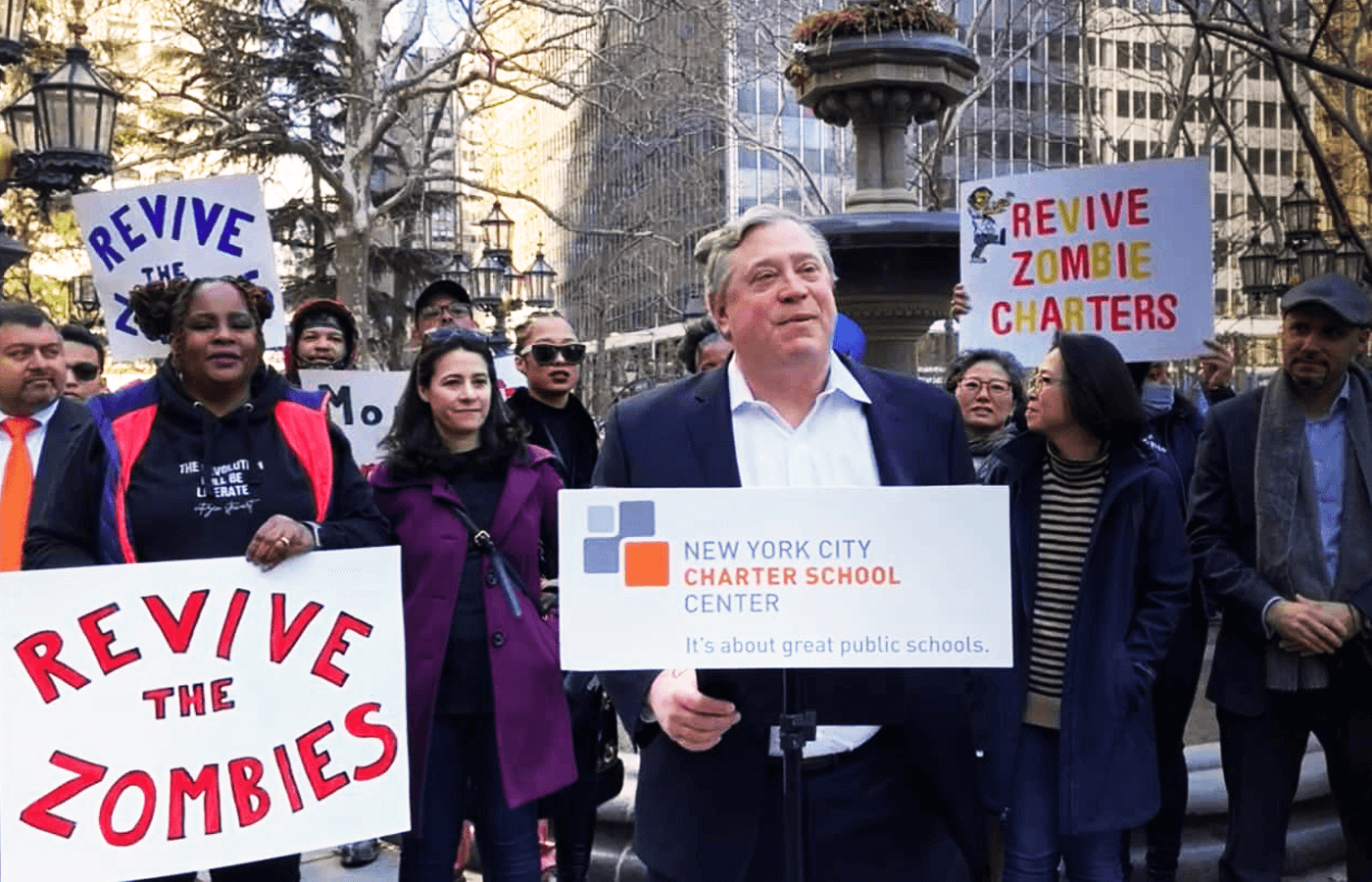
In hindsight, New York was an unlikely locus of charter-school dynamism. “There was never a moment where there was great political enthusiasm for charters in New York,” notes James Merriman, the longtime head of the New York Charter Center, an advocacy organization. “It was just not in the DNA of New York, New York,” a Democratic stronghold and a stalwart union town. In 1999, Governor George Pataki approved a pay raise for state lawmakers in a political bargain that led to passage of the law authorizing charter schools. In New York City, a few years later, charter-school operators lucked into a pair of staunch allies in Mayor Michael Bloomberg and his schools chancellor Joel Klein, who raised millions of philanthropic dollars and lured the most successful charter management organizations with the promise of rent-free “co-located” space alongside traditional schools in buildings owned and run by the city’s Department of Education. The availability of facilities for start-up charter schools was “more than a shot in the arm,” Merriman recalls. “It was life itself.”
Bloomberg’s last day as mayor was December 31, 2013, but he remains a player in the city and in education reform. In April 2022, Bloomberg Philanthropies announced a pair of $100 million dollar gifts, one each for Harlem Children’s Zone and Success Academy. In Schenectady, Re’Shawn Rogers is operating on a much smaller scale. He and his school have received grants totaling $100,000 from BES, another $50,000 from the Albany’s Brighter Choice Foundation, and $70,000 from the Schenectady Foundation. “I had to work for that myself, so I’m very proud of that,” Rogers tells me over sandwiches and coffee at a downtown Schenectady pub. He’s equally pleased to have secured a deal that folds construction costs for his new school into the monthly rent for the space, which also offers room to expand as he enrolls more students in the next five years. And there’s another thing he’s proud of, now that he’s left a big charter management organization to open his own school: “It’s become important to me to make sure I see people of color in positions of power, and now I have the opportunity to put people in those positions.” A lot of his friends who are leading and starting schools are people of color, he adds, “so it’s starting to become more normalized to me.”
After lunch, we walk a few blocks to his school. Destine Prep is wallboard, insulation, and ductwork—a construction site, not an elementary school. It seems inconceivable that more than 100 kindergarteners and 1st graders will march up the stairs and into classrooms in less than two months. Rogers is unfazed. Like those early charter-school founders, he does not suffer from a lack of confidence.
But it’s all different now. The mission and vision of charter schools, the politics, the concerns of activists and advocates, and the deliverables demanded by philanthropists have all shifted over time. So have the values and ideals of the young people who still flock to this work, albeit in fewer numbers than in its halcyon days. Carello left SUNY over the summer to join the Hoover Institution at Stanford University. New York’s charter-school cap remains in place, but lobbyists and advocates suggest things might be different under Governor Kathy Hochul and New York City mayor Eric Adams, who sometimes sounds more favorably disposed to charter schools than the staunch enemy he replaced, Bill de Blasio. When charter advocates nowadays pitch lawmakers on lifting the cap, conversation is more likely than not to mention creating opportunities for more community-based charter schools like Destine Prep, rather than giving more charters to the big networks.
The one thing that hasn’t changed in 25 years are the parents. On an unseasonably chilly Saturday afternoon in June, Mashoma Brydie welcomes parents to a community center in Schenectady. Two dozen kindergarten and 1st graders are scheduled to be fitted for school uniforms for the school year that’s now just two months away. One of the first to arrive is Christine Lawson, whose grandson Jayceon will start kindergarten this fall.
If Re’Shawn Rogers is the school leader that charter trailblazers imagined would one day lead their movement, Lawson is the matriarch of the archetypal family charters were built to serve. Her own mother worked for the New York City Board of Education, but Lawson wanted something better for her five children, who today range from 18 to 45 years of age. So she cobbled together a mix of public, private, and Catholic schools in Brooklyn and the Bronx for them. All five graduated, which she suggests was no mean feat “during the drug era” in New York City. One went on to earn a degree from the University of California, Berkeley. Jayceon’s mom Whitney is also at the uniform fitting, but when it comes to schools, Lawson is clearly the decision maker in the family.
Her youngest son is about to graduate from Schenectady High School, but Lawson’s grandson will not be setting foot in the city’s schools. “Public school? Nah,” she says, then quickly adds she has nothing against them. The teachers in her son’s school “go hard for the kids,” but public schools “believe in social promotion” and don’t have high enough standards. “You’re just not walking out of high school with everything you need. I know that for a fact,” Lawson tells me. She’s certain Destine Prep will offer a “deeper level” of attention for her grandson. “It’s a brand-new school, but I trust them. I just trust them,” she explains. “We need more attentive people and hard-working teachers, and they’re in charter schools.” She learned about Destine Prep via a Facebook post. If she hadn’t, she would have “done her homework” on other options for her grandson. Even now, her daughter is still considering moving back to New York City. “If she goes back, then I’m gonna follow her, and we’re going to choose a Catholic school” for Jayceon.
She joins a handful of other families in front of a long table, covered with an array of neatly folded sky-blue Destine Prep uniform shirts and khaki pants. Lawson smiles, sighs, and says to no one in particular, “There’s just something about a charter school.”
Robert Pondiscio is a senior fellow at the American Enterprise Institute. He is author of How The Other Half Learns: Equality, Excellence, and the Battle Over School Choice.
This article appeared in the Winter 2023 issue of Education Next. Suggested citation format:
Pondiscio, R. (2023). What Next for New York Charter Schools? The era of explosive growth of network-run, “no excuses” charter schools is over. Tentatively emerging: “community-based” charter schools. Education Next, 23(1), 36-44.


